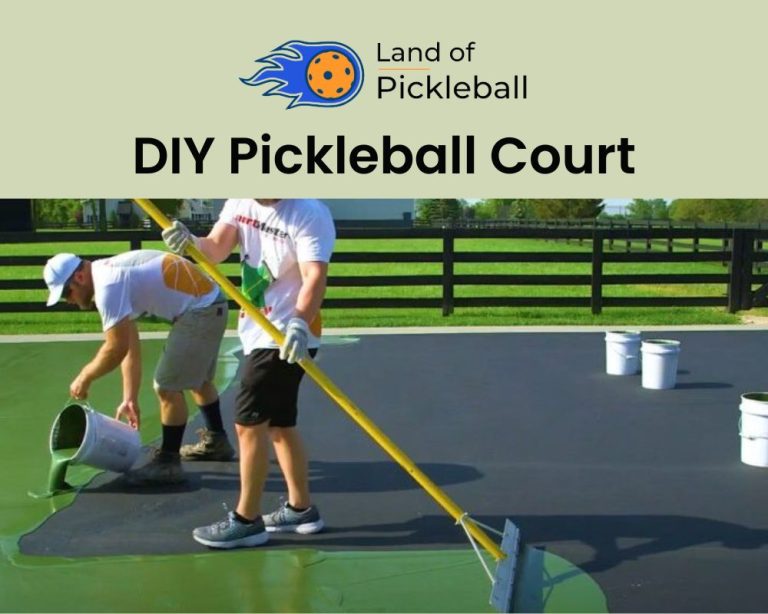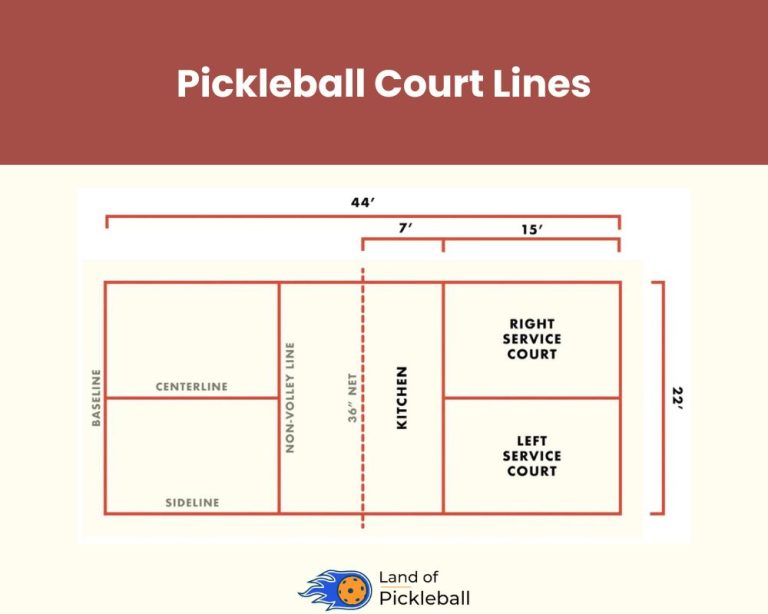How Long is a Pickleball Court? Right Size Selection
Pickleball courts are typically 20 feet wide by 44 feet long, which are standard dimensions for both singles and doubles play, similar to badminton courts.
Whether you’re new to pickleball or a seasoned player, our guide explores the dimensions, layout, and features. It provides a comprehensive overview of this exciting sport. Therefore, if you’re new to this racquet sport, you must join the pickleball excitement. In 2022, USA Pickleball saw a 30% increase in membership, it reached 70,000 players by February 2023. It’s no wonder that pickleball is easy to play and fun for all ages and skill levels.
Read More: Pickleball Dimensions
What are the Standard Pickleball Court Dimensions?
So, Pickleball fans must note that A standard pickleball playing area obviously measures “20 feet in width and 44 feet in length”.
The court region comprises a net (centrally positioned) that hangs 34 inches high in the middle and 36 inches high at the sidelines. However, knowing these official dimensions is crucial for you, as it maintains uniformity and fairness in the sport.
Official Measurements

Pickleball Court Core Terms and Their Significance
This Length of a pickleball court accommodates both singles and doubles play, resembling a tennis court in scale.
Net Specifications
The net stretches across the width of the court, positioned at a height of 34 inches at the center and 36 inches at the posts, contributing to the court’s dynamic playstyle.
Marking & Surface
The court’s boundaries, non-volley zones, and service areas are precisely marked, usually with painted lines. Ideally, the surface should be smooth and flat, made from asphalt, concrete, or other rigid materials, ensuring optimal play conditions.
Understanding the strategic importance of these dimensions aids players in planning their shots and positions effectively. These allow you to have better anticipation of your opponent’s moves and more adept responses.
Strategic Play: Knowing these dimensions allows you to strategize your gameplay. Proper positioning and shot anticipation are key to success in this advanced gameplay.
Importance of Standardized Dimensions
Standardized dimensions are crucial for maintaining fairness and consistency in pickleball games, allowing players to develop strategies and skills that are applicable across different courts. It is these consistent measurements that make pickleball a universally accessible and enjoyable sport, whether played recreationally or competitively.
Comparison of Pickleball Courts with Tennis Courts
Pickleball courts are more compact compared to tennis courts, rendering them more dynamic and accessible. This difference in size of both sport’s courts facilitates a faster-paced game, it’s also the best approach to a broad spectrum of players.

How to Build Your Personal Pickleball Court?
Well, learning How Long is a Pickleball Court? is vital for building your court. If you’re willing to enjoy pickleball within your property’s confines, must consider building your own court.
Advantages
Building a personalized pickleball court can be an enriching project, allowing for convenience and enjoyment in your backyard.

Steps for Construction You Required Pickleball Court Length
Consider the following steps to erect your court:
Cost Implications
Constructing a court is a rewarding endeavor. Let’s evaluate the cost as a paramount aspect. The main costs consist of building the playing surface and marking the court which is a minimum of $20,000. These expenses vary depending on location, DIY or professional methods chosen, and materials selected. Additional features such as lighting and fencing also impact costs.
Primary Expenses:
Additional Costs:
Opting for DIY might reduce costs, but professional guidance ensures quality and adherence to regulations.
Read More: Cost to Build a Pickleball Court
How Long is a Pickleball Court – Out-of-bounds Zones
Clearly defined out-of-bounds zones maintain the game’s integrity. Ideally, these should be at least 10 feet wide along each sideline and 7 feet deep behind each baseline. For unprepared games, drawing temporary pickleball lines is quick and straightforward, allowing for flexibility in playing locations.
Essential Accessories
Alongside understanding court dimensions, having the right equipment, including paddles, balls, and proper athletic wear, is vital for an enjoyable pickleball experience.
FAQs
Final Thoughts
When looking for the question, “How long is a pickleball court?” it’s essential to understand that a standard court has a length of 44 feet and a width of 20 feet. With precise markings and standardized dimensions, you can enjoy a fair and consistent game of pickleball.
Knowing the court layout and its specs enables you to polish your skills and strategies. Afterward, you may contribute to the growth and enjoyment of this exciting sport. So, whether you are going for a permanent court or drawing temporary lines for a quick game, understanding these aspects is essential.







